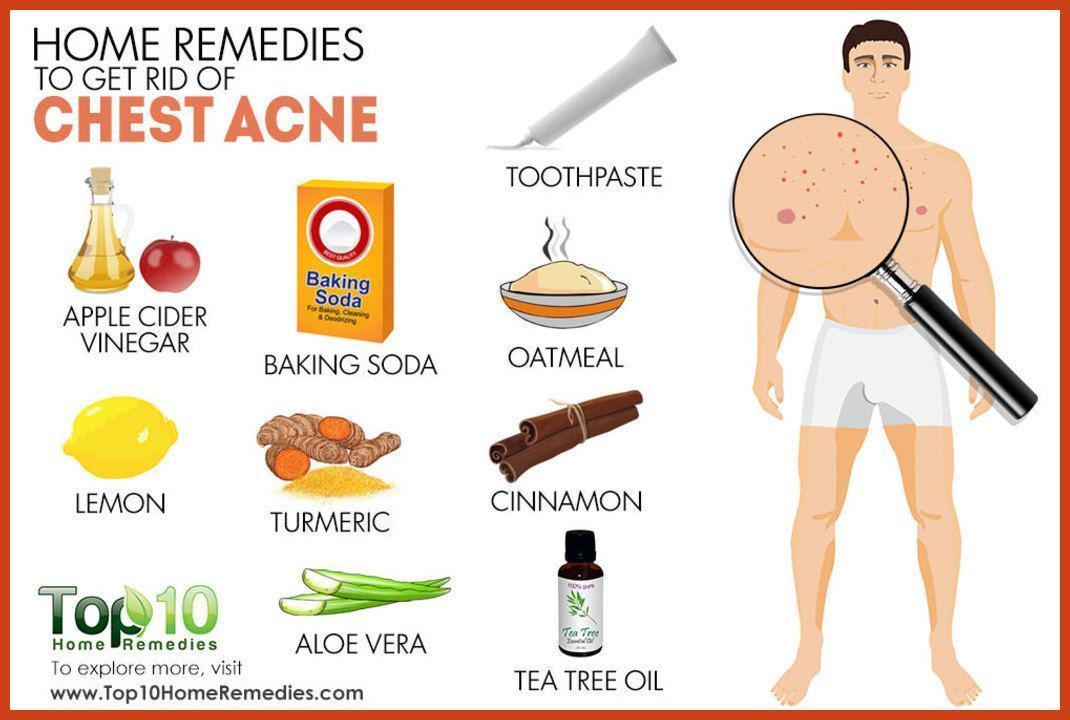Causes of Pimples on Chest: How to Prevent or Treat Chest Acne
What causes pimples on the chest? How can you prevent or treat chest acne? Get the answers to these questions and learn about the factors that contribute to chest breakouts.
Understanding Chest Acne
Acne is a common skin condition that affects people of all ages, and it can occur anywhere on the body where there are oil glands, including the chest. Chest acne develops in a similar way to acne on other parts of the body, with the buildup of dead skin cells, excess oil, and the presence of a specific type of bacteria called Cutibacterium acnes leading to inflammation and the formation of pimples, blackheads, and whiteheads.
Causes of Chest Acne
Several factors can contribute to the development of chest acne, including:
- Skin care products: Using skin care products that prevent or hinder water loss can lead to clogged pores and acne on the chest.
- Friction from clothing: Tight or abrasive clothing can irritate the skin and exacerbate chest acne.
- Excessive sweating: Sweat can mix with oil and dead skin cells, leading to blocked pores and breakouts.
- Medications: Certain medications, such as corticosteroids, testosterone, or lithium, can worsen acne.
- Hormonal changes: Hormonal fluctuations during puberty, pregnancy, and other life stages can stimulate oil glands and contribute to acne development.
- Diet: Some studies suggest that skim milk, chocolate, and high-carbohydrate foods may worsen acne, though more research is needed.
- Stress: When the body is under stress, it produces hormones called androgens that can stimulate oil glands and lead to increased inflammation and acne.
Preventing Chest Acne
To help prevent or manage chest acne, try the following strategies:
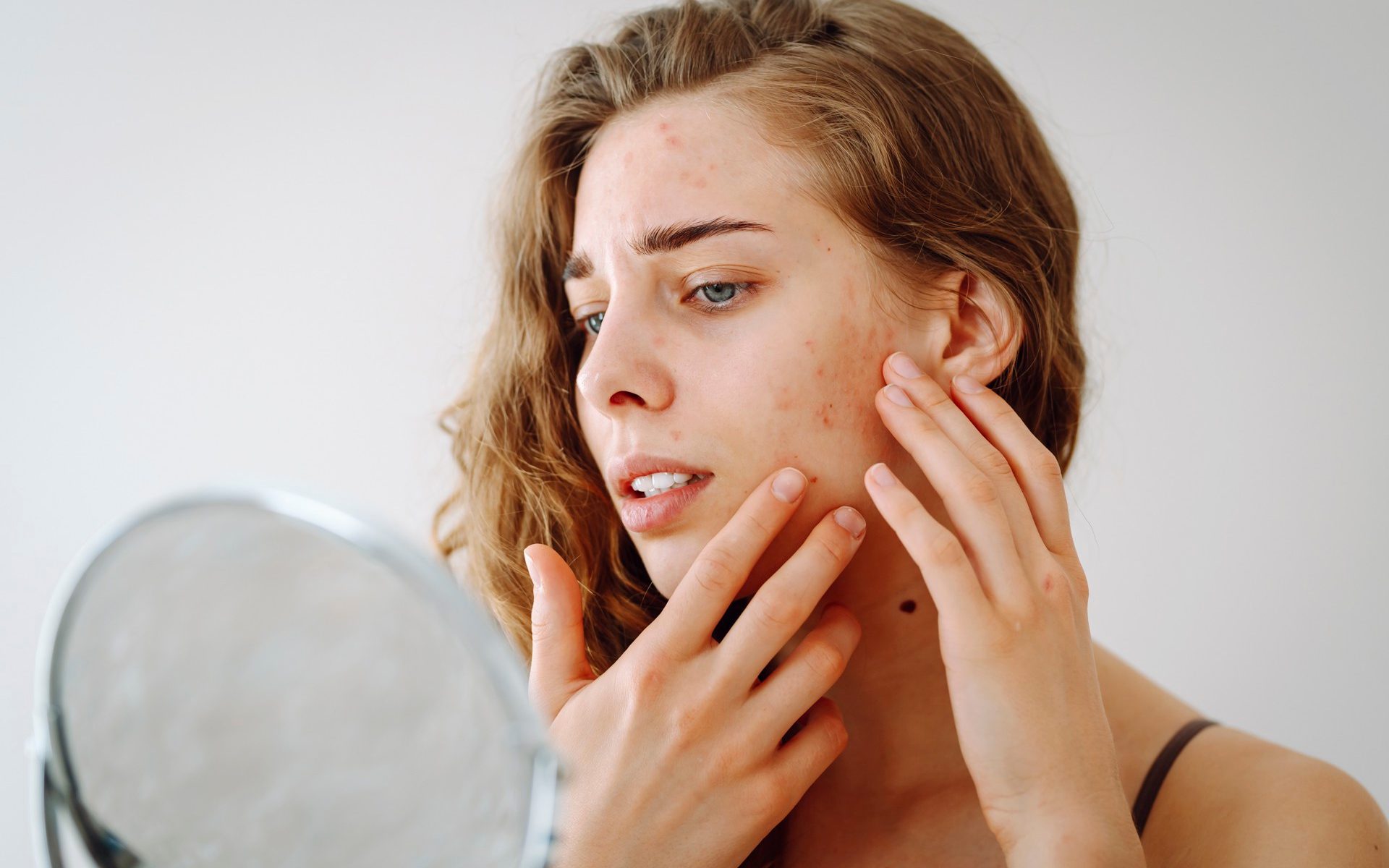
- Use gentle, non-comedogenic (non-pore-clogging) skin care products.
- Wear loose, breathable clothing to minimize friction and sweat buildup.
- Shower after exercise or sweating to remove excess oil and bacteria from the skin.
- Consider over-the-counter body washes containing salicylic acid or benzoyl peroxide.
- Avoid harsh scrubbing, which can irritate the skin and worsen acne.
- Manage stress through relaxation techniques, exercise, and healthy lifestyle habits.
- Consult a healthcare provider if over-the-counter treatments are not effective, as prescription topical or oral medications may be necessary.
Treating Chest Acne
If you are struggling with chest acne, there are several treatment options to consider:
- Over-the-counter products: Look for body washes and creams containing salicylic acid or benzoyl peroxide, which can help unclog pores and reduce inflammation.
- Prescription medications: Your healthcare provider may prescribe topical or oral medications, such as retinoids, antibiotics, or hormonal therapies, to manage more severe or persistent acne.
- Professional treatments: For cystic or scarring acne, your healthcare provider may recommend professional treatments like chemical peels, laser therapy, or extractions.
Coping with Chest Acne
Dealing with chest acne can be frustrating and may impact your self-esteem. Remember that acne is a common and treatable condition, and there are ways to manage it:
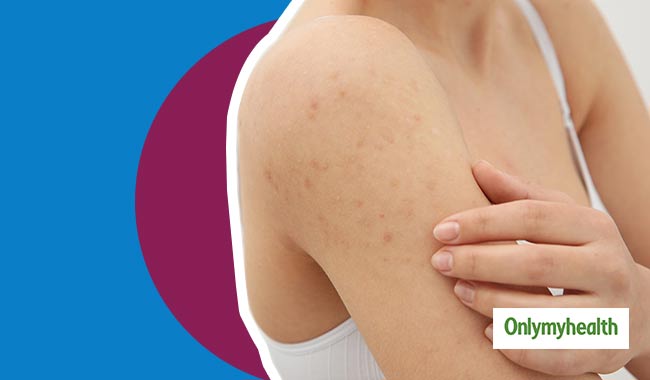
- Be patient and consistent with your treatment regimen, as it can take several weeks to see improvements.
- Avoid picking or popping pimples, as this can lead to scarring and further irritation.
- Seek support from loved ones or a mental health professional if the emotional impact of acne becomes overwhelming.
- Focus on overall skin health and wellness, as factors like stress, diet, and hygiene can all play a role in acne development.
Key Takeaways
Chest acne is a common skin condition that can be caused by a variety of factors, including skin care products, clothing, sweat, hormones, medications, diet, and stress. By understanding the causes and implementing gentle, effective prevention and treatment strategies, you can manage chest acne and maintain healthy, clear skin.
How to prevent or treat chest acne
Speaking of Health
Topics in this Post
- Cosmetic Services
- Family Medicine
Acne is a skin condition that nearly everyone deals with at some point in their lives. It’s caused by the accumulation of dead skin cells that block your pores and leads to an abundance of a specific type of bacteria present on the skin called propionibacterium acne. As a result, your skin becomes inflamed and causes whiteheads, blackheads or pimples to form.
Unfortunately, acne has no boundaries. It’s more common for teenagers, but it can affect people of all ages, and about equally between men and women. Acne also can appear anywhere you have oil glands in your skin, so it can occur on your back, face, stomach or chest.
Chest acne develops the same way as other acne, but some factors can affect its formation, including:
- Using skin care products that prevent or hinder water loss
- Friction from clothing
- Excessive sweating
Chest acne isn’t the result of poor hygiene. It’s not caused by dirty skin and can actually be made worse with harsh soap or chemicals and rough scrubbing.
It’s not caused by dirty skin and can actually be made worse with harsh soap or chemicals and rough scrubbing.
Other factors that worsen acne include:
- Certain medications
Examples include corticosteroids, testosterone or lithium. - Hormones
Hormonal changes related to puberty and pregnancy can cause your glands to produce more oil and lead to more acne. - Diet
Some studies suggest that skim milk, chocolate and foods high in carbohydrates can worsen acne. Rather than restricting these foods completely, limit your consumption, if desired. - Stress
When your body is under stress, it produces hormones called androgens that affect various parts of the body, including the skin. In the skin, these hormones may stimulate hair follicles and oil glands, leading to more inflammation and development of acne.
There are many treatments available for chest acne to help you avoid skin scars, make acne less noticeable and lower the emotional stress caused by the acne. Use gentle scrubs and noncomedogenic creams so skin pores don’t get clogged. Over-the-counter body washes that include salicylic acid and benzoyl peroxide can provide some relief of mild inflammatory acne. Avoid coarse or rough body scrubs, since they’re traumatic to the skin.
Use gentle scrubs and noncomedogenic creams so skin pores don’t get clogged. Over-the-counter body washes that include salicylic acid and benzoyl peroxide can provide some relief of mild inflammatory acne. Avoid coarse or rough body scrubs, since they’re traumatic to the skin.
If over-the-counter products aren’t working, talk with your health care provider about topical and oral medications that can help you manage your acne.
Amanda Logan is a nurse practitioner in Family Medicine in Janesville, Minnesota.
Topics in this Post
- Cosmetic Services
- Family Medicine
Sunburn treatment: What works?
Don’t turn your back on back acne
Risks of using expired makeup
Common Causes and Effective Treatments
Published
16 June 2020
Fact Checked
Reviewed by Tanya Tantry, MD, Obstetrician & Gynecologist, Medical Consultant at Flo
Flo Fact-Checking Standards
Every piece of content at Flo Health adheres to the highest editorial standards for language, style, and medical accuracy. To learn what we do to deliver the best health and lifestyle insights to you, check out our content review principles.
To learn what we do to deliver the best health and lifestyle insights to you, check out our content review principles.
Lots of people experience various types of acne, including chest acne. If you’re wondering why your chest is breaking out, read this complete guide to learn what chest acne is, what causes it, and some tips for treatment.
What is chest acne?
Acne is the most common skin condition treated by health care providers. Oil glands in your skin naturally produce a substance called sebum. Acne occurs when your pores get clogged by dead skin cells, causing a buildup of sebum.
Cutibacterium acnes is the medical term for bacteria within skin pores. This bacteria can block your pores and cause inflammation of the skin, which can cause redness, swelling, and acne spots. Acne describes the pimples, whiteheads, blackheads, and cysts that appear.
Acne is most common on the face and neck but also occurs on the chest, shoulders, upper arms, and back. At some point in their lives, almost everyone will experience at least a few pimples or blackheads.
At some point in their lives, almost everyone will experience at least a few pimples or blackheads.
Typically, acne starts in puberty and commonly affects teenagers. Some people will have just a few pimples, while others will have more severe outbreaks that can lead to significant issues such as scarring and poor self-esteem. Scarring can occur from cystic acne. Cystic acne is a painful and severe form of acne.
Most teenagers’ acne goes away in their early 20s, but it can stick around for longer. Some people don’t experience acne in their teenage years but see it develop in their late 20s or 30s.
Chest acne causes
People who are prone to acne have sensitive and overactive sebaceous (oil-producing) glands. If your follicles are blocked from dead skin buildup, the extra oil stays on the skin. This can result in whiteheads and blackheads. The sebaceous glands often become more active during puberty.
Propionibacterium acnes is the acne bacteria that lives on everyone’s skin. Usually, this bacteria doesn’t cause any problems. However, for those prone to acne, the buildup of oil creates an environment for the bacteria to multiply quickly. This causes inflammation and red or pus-filled spots.
Usually, this bacteria doesn’t cause any problems. However, for those prone to acne, the buildup of oil creates an environment for the bacteria to multiply quickly. This causes inflammation and red or pus-filled spots.
Acne can be hereditary, especially in its severity. If one or both of your parents had acne, you are more likely to have acne too.
Sometimes acne is triggered by medications or conditions. For example, some contraceptive pills and other medication with hormones can trigger acne.
Acne for women can be particularly complicated. Androgens are a group of hormones that play a role in male traits and male reproductive activity, but everyone has these hormones. When women have hyperandrogenism disorders such as polycystic ovary syndrome, they’re more prone to acne. When women take anti-androgen medications, there is a reduced risk of acne. This is because androgens stimulate the production of sebum and are therefore closely linked to acne.
Acne can be associated with hormonal changes in the body. If you’re experiencing unusual acne along with irregular periods or unusual hair loss or growth, mention these changes to your health care provider.
If you’re experiencing unusual acne along with irregular periods or unusual hair loss or growth, mention these changes to your health care provider.
Chest acne occurs the same way as any other type of acne on the body. Some factors that can result in breaking out on the chest include
- Friction from clothing
- Excessive sweating
- Using skin care products that prevent or reduce water loss
Like most acne, acne on the chest is not a result of poor hygiene. Acne is not caused by dirty skin and can become more inflamed by using harsh soaps, chemicals, or rough scrubbing.
Other factors that can make acne worse are:
- Certain medications
- Hormonal changes, especially during pregnancy and puberty, that cause the glands to produce more oil
- Foods high in carbohydrates, skim milk, and chocolate
- Stress, which produces more of the hormone cortisol
How to get rid of chest acne
Acne is a chronic condition, so it can be really difficult to treat.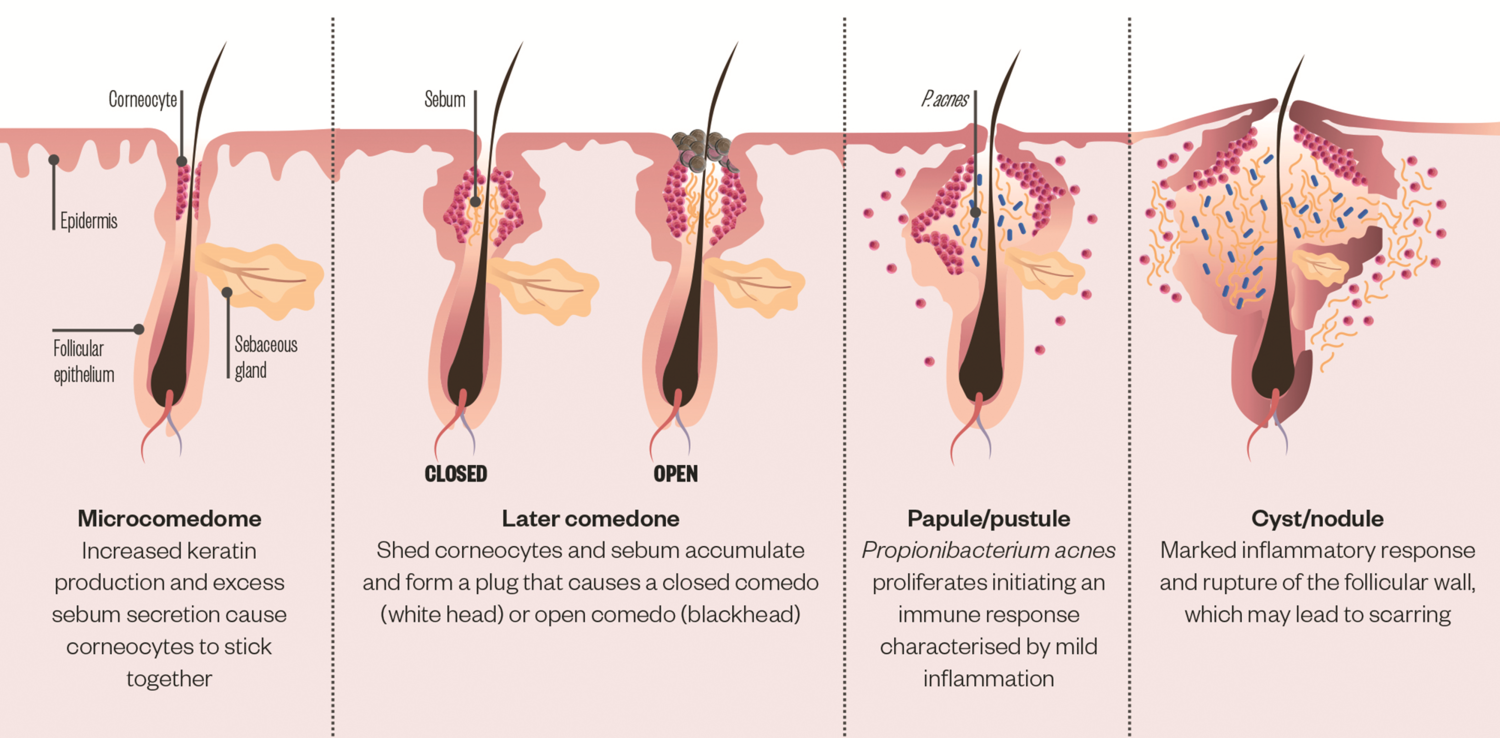 However, there are multiple things you can try to find the right chest acne treatment.
However, there are multiple things you can try to find the right chest acne treatment.
Work with your dermatologist to set realistic goals. Your dermatologist may want you to come in every 8 to 12 weeks to monitor your progress, manage any adverse side effects, and make sure you’re taking your medication correctly. Your dermatologist will help you figure out what to do next if your current treatment isn’t working.
Typically, both over-the-counter products and treatment by a dermatologist will take between two and four months to produce their maximum effect.
Acne treatments fall into five main categories:
- Topical treatments
- Oral antibiotics
- Oral contraceptive pills
- Isotretinoin capsules
- Other treatments
Topical treatments
Topical treatments are the most common treatment for people with mild to moderate acne. Topical treatment should be applied to the entire affected area of the skin.
Oral antibiotic treatment
Some health care providers will prescribe antibiotic pills./15483-back-acne-and-body-acne-5af1feb88e1b6e003908e58c.png) These may be prescribed in combination with topical treatment. You may need to take antibiotics for two to six months.
These may be prescribed in combination with topical treatment. You may need to take antibiotics for two to six months.
Oral contraceptive treatments
Oral contraceptive pills can sometimes help treat acne. The most effective oral contraceptive pills for acne treatment contain a progestin with anti-androgenic action. It can take three to four months before you’ll see any progress from oral contraceptive treatment.
Isotretinoin
Isotretinoin is a highly effective treatment for acne that can produce results for up to two years after treatment. Isotretinoin also has high risks of severe side effects. You shouldn’t take isotretinoin if you’re pregnant, and potential side effects include depression and suicidal feelings. You can work with your dermatologist or health care provider to decide if the potential side effects are worth it.
Other treatments
There are other methods of treatment that target acne, including:
- Light and laser therapy for inflammatory acne
- Facial skin resurfacing with laser treatment to lighten or remove post-acne scarring
Lifestyle changes to get rid of chest acne
Lifestyle changes may help get rid of chest acne.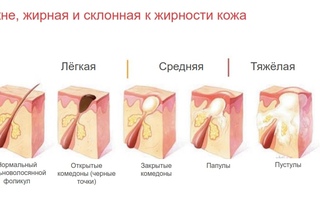 Several factors have been linked to acne breakouts and flare-ups. While these factors may be different for each person, if you’re prone to acne, you may want to incorporate most or all of these lifestyle changes:
Several factors have been linked to acne breakouts and flare-ups. While these factors may be different for each person, if you’re prone to acne, you may want to incorporate most or all of these lifestyle changes:
- Avoiding cosmetics that can clog pores
- Avoiding items that put physical pressure on the body, including phones, headbands, helmets, chinstraps, guitar straps, bra straps, and shoulder pads
- Limiting excessive sweating (showering immediately after exercise can help)
- Avoiding washing more than twice a day
- Avoiding medications that cause acne flare-ups
- Avoiding picking or popping pimples (this can spread the bacteria to surrounding areas)
- Avoiding foods that seem to aggravate your acne (many people report dairy products cause acne flare-ups)
- Staying hydrated
- Practicing stress management activities such as meditation and yoga (stress can cause your skin to produce more oil)
- Avoiding too much direct sunlight (tanning can make acne breakouts worse)
When to see a specialist
When starting a new treatment, it can take six to eight weeks before you’ll see any results. Complete clearing of the acne can take three to four months. If you’ve started treatment and see no changes within eight weeks, it may be time to consult a dermatologist.
Complete clearing of the acne can take three to four months. If you’ve started treatment and see no changes within eight weeks, it may be time to consult a dermatologist.
Top things to remember
Chest acne can be uncomfortable and make some people feel self-conscious and embarrassed. There are many options for treating acne. Remember that acne is common, happens to most people, and is not a result of dirty skin.
References
https://dermatology.ca/public-patients/skin/acne/
http://www.bad.org.uk/for-the-public/patient-information-leaflets/acne/?showmore=1&returnlink=http%3A%2F%2Fwww.bad.org.uk%2Ffor-the-public%2Fpatient-information-leaflets#.Xj7QvmhKhPZ
https://www.mayoclinichealthsystem.org/hometown-health/speaking-of-health/the-facts-about-chest-acne
https://www.ncbi.nlm.nih.gov/pmc/articles/PMC5986265/
History of updates
Current version
(16 June 2020)
Reviewed by Tanya Tantry, MD, Obstetrician & Gynecologist, Medical Consultant at Flo
Published
(14 June 2020)
Where do acne appear on the chest, how to remove them?
Inflamed acne and pustules in any area of the face and body cause discomfort. But acne on the chest brings even more inconvenience, especially when it comes to the female decollete. Why this problem occurs, and how to deal with it – let’s try to figure it out.
But acne on the chest brings even more inconvenience, especially when it comes to the female decollete. Why this problem occurs, and how to deal with it – let’s try to figure it out.
Causes of pimples
Acne in the décolleté area is often associated with factors such as:
- clogged pores. In the ducts of the sebaceous glands of the skin, sebum can accumulate, which mixes with dead particles of the epidermis. Clogged pores often become inflamed due to the growth of bacteria, for which their contents are an excellent breeding ground;
- “wrong” clothes. As a rule, these are products made of dense synthetic fabric that violates the thermoregulation of the skin. In overweight people, pimples often appear under the breasts due to the lack of normal air exchange and high humidity;
- diseases of internal organs. For example, malfunctions of the pancreas, kidneys, gastrointestinal tract;
- allergy. Acne on the chest may appear in response to the use of certain foods, such as citrus fruits, chocolate;
- stress.
 Emotional overload adversely affects the entire body, introduces an imbalance in the functioning of the immune and other systems. Skin reactions are a response to psychological experiences.
Emotional overload adversely affects the entire body, introduces an imbalance in the functioning of the immune and other systems. Skin reactions are a response to psychological experiences.
What does the appearance of pimples on the chest indicate?
White pimples occur due to blockage of sebum and epidermal particles of the excretory duct of the sebaceous gland. Such pimples on the chest are usually small, but there are many of them. A similar picture may indicate the use of inappropriate cosmetics or perfumes.
Red pimples on the chest indicate violations of local thermoregulation. The heat exchange processes of the skin with the environment are negatively affected by dense synthetic fabrics.
Hormonal changes, such as in women during pregnancy, affect the production of sebum. Due to its excess, acne can occur on the chest. They also talk about possible violations in the endocrine system.
Abscesses on the skin in the chest area are a reason to take your health seriously. Purulent rashes may indicate the presence of diseases such as diabetes, immunodeficiency, etc.
Purulent rashes may indicate the presence of diseases such as diabetes, immunodeficiency, etc.
How to get rid of acne on the chest?
First of all, it is necessary to exclude the above provoking factors. Wear loose clothing made from natural fabrics, take care of your health, follow the rules of hygiene, and avoid stress.
If rashes in the chest area continue to bother you regularly, are widespread and tend to spread, you should visit a dermatologist. Perhaps he will give a referral for a consultation with other narrow specialists.
Traditional medicine recipes for acne on the chest
Cosmetic clay works well on skin prone to rashes. You can use white, blue, green. A tablespoon of clay is mixed with the same amount of honey, a teaspoon of aloe juice is added and applied twice a day for 25 minutes to acne in the chest area.
You can make a mask out of raw potatoes. To do this, rub the peeled tuber on a grater and apply the resulting slurry to the problem area for 30 minutes. Potatoes have antibacterial properties.
Potatoes have antibacterial properties.
Baths with sea salt are not only pleasant, but also beneficial, especially for the skin. This natural iodine-salt solution dries up rashes, destroys bacteria and relieves inflammation.
Single blackheads can be removed with apple cider vinegar. It is diluted with water in a ratio of 1: 1 and applied pointwise to acne on the chest.
Another recipe: a teaspoon of ground cinnamon, a tablespoon of honey, 10 ml of vodka. Pimples should be treated with this mixture every day, rubbing the composition in a circular motion for 15 minutes.
A well-known Ayurvedic remedy helps with acne on different parts of the face and body. Cream Clearvin is produced according to the Indian recipe from natural raw materials.
Details on the website.
Pimples on the chest: causes and treatment
Acne treatment in summer with Klindovit gel ®
Find in my city
Contents
The appearance of pimples* on the chest is no less common than on the face.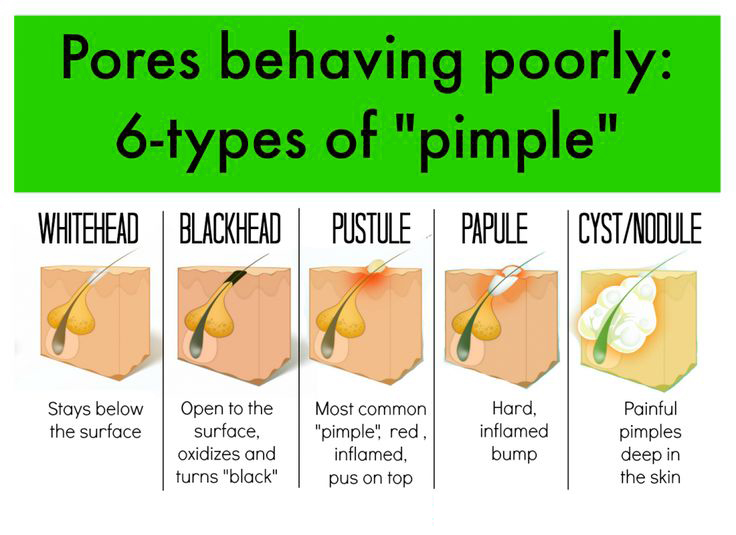 When acne occurs in this area, there is a desire to hide it. But wearing golfs, closed sweaters will not save the situation, and in some cases it can even aggravate it if the clothes are uncomfortable or do not let air through. When it comes not to a few pimples*, but to systematically appearing acne, you need to contact a specialist. The dermatologist will find out the causes of the rashes and select the methods of treatment.
When acne occurs in this area, there is a desire to hide it. But wearing golfs, closed sweaters will not save the situation, and in some cases it can even aggravate it if the clothes are uncomfortable or do not let air through. When it comes not to a few pimples*, but to systematically appearing acne, you need to contact a specialist. The dermatologist will find out the causes of the rashes and select the methods of treatment.
Why do pimples appear on my chest*?
Pimples* on the chest can have several causes [4, 50, 29]:
- Hormonal imbalance. The presence of gynecological diseases, puberty in adolescents, certain periods of the menstrual cycle cause a surge of hormones that provoke rashes.
- Improper nutrition. Although the influence of the dietary factor on the formation of acne has no reliable evidence, it is believed that some foods can indirectly provoke an exacerbation of acne. In particular, these include milk, cakes, sweets, fatty, salty foods.

- Wearing tight, uncomfortable clothing. Rashes may occur on the chest due to wearing synthetic clothing, which does not allow the skin to breathe, increases sweating. Also, rashes can appear due to constant rubbing or squeezing.
- Cosmetics with comedogenic ingredients. Its use leads to clogging of pores, the development of acne.
Acne occurs for various reasons – heredity, mechanical effects, long-term use of certain medications, stress [4, 50, 29]. Before treating acne * on the chest, it is necessary to be examined by a specialist.
How to remove and prevent pimples* on the chest?
Although there is no cure for acne, there are a few helpful tips to help reduce the risk of chest rashes:
- Showering should be done immediately after exercise and exercise. Rashes can be triggered by profuse sweating.
- Do not use aggressive cosmetics in the décolleté area. The skin here is thin, it requires a delicate approach.

- Take special care. Most girls ignore the décolleté area when caring for their skin, but in vain. For this part of the body, there are special tools that take into account its features.
- If there are pimples* on your chest, review your diet. Eliminate fast carbohydrates from it, give up fast food, carbonated drinks, coffee, alcohol.
- Give preference to clothing made from natural fabrics, make sure that things do not rub or squeeze your skin.
- Try to reduce the number of stressful situations. Under the influence of cortisol, the sebaceous glands can secrete more sebum.
Remember that acne is a chronic disease. It cannot be cured once and for all, but the risk of its exacerbation can be reduced.
Pimples* on the chest: which organ can malfunction?
There is a theory that rashes on the décolleté and on the neck may indicate such problems [208]:
- disorders of the endocrine system;
- diseases of the digestive system;
- colds.


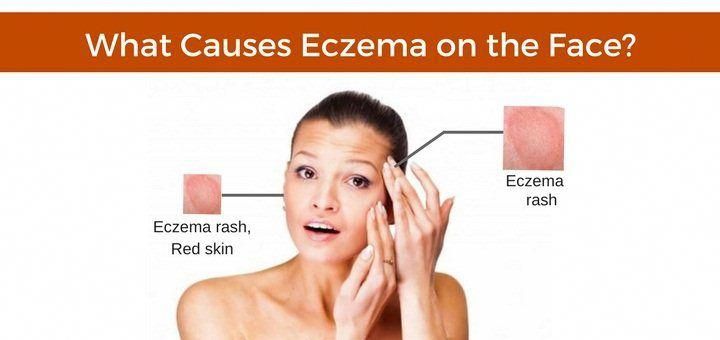 Emotional overload adversely affects the entire body, introduces an imbalance in the functioning of the immune and other systems. Skin reactions are a response to psychological experiences.
Emotional overload adversely affects the entire body, introduces an imbalance in the functioning of the immune and other systems. Skin reactions are a response to psychological experiences.

